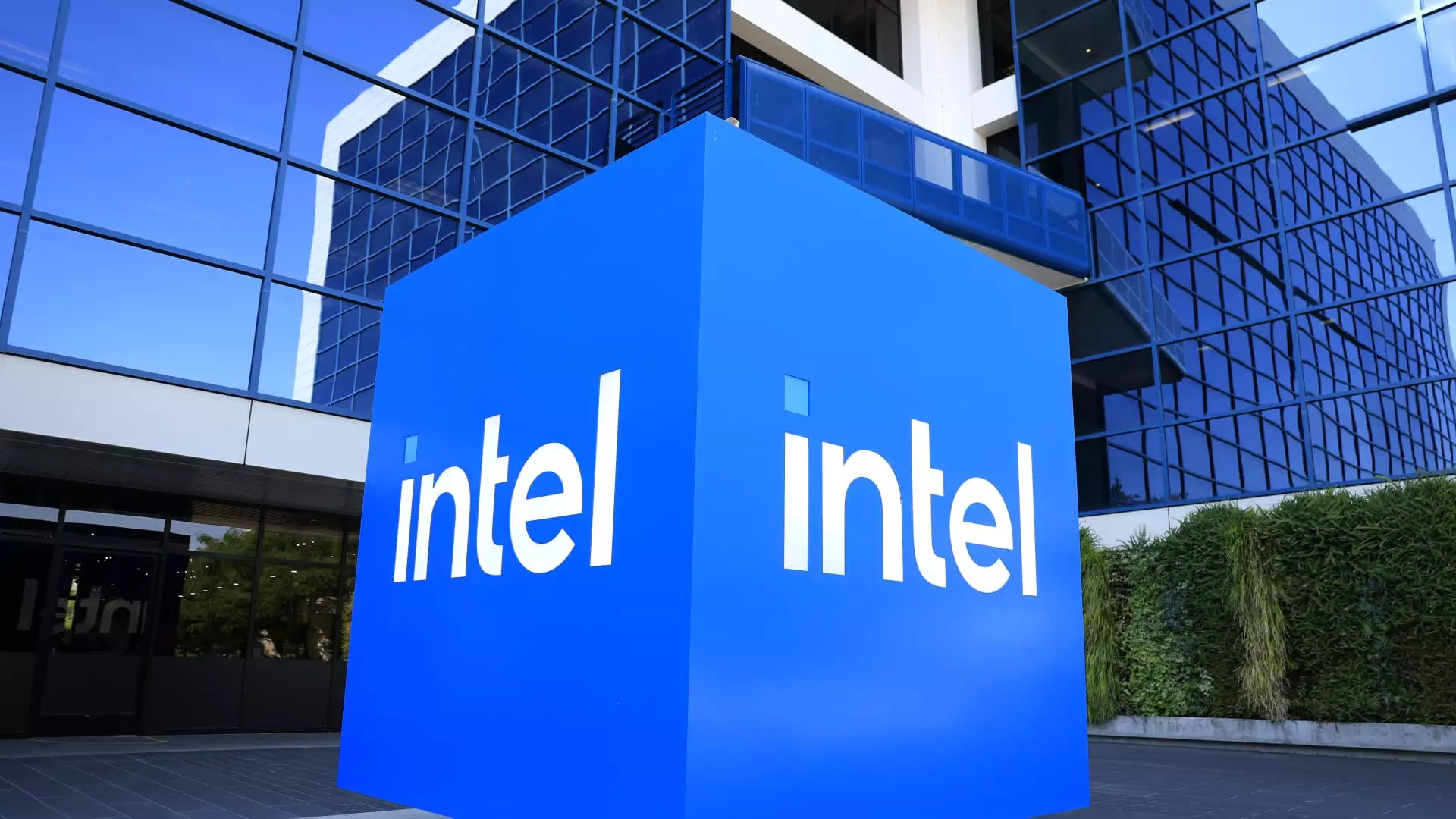Intel’s latest quarterly report unveils a complex narrative—one that oscillates between cautious optimism and ominous signals of systemic decline. Despite surpassing Wall Street expectations in revenue, the grim reality of mounting losses and strategic upheavals reveals a company desperately trying to cling to relevance in a fiercely competitive landscape. The reported net loss of $2.9 billion is a sobering alarm, not ruffled by the misleading veneer of just beating revenue estimates. When set against a backdrop of a 60% stock decline this year, Intel’s stock rally of 13% feels more like a feeble rally of hope than a sign of resurgence. The company’s attempt to position itself as a leaner, more efficient enterprise under Lip-Bu Tan’s stewardship introduces more questions than answers. Can they pivot fast enough, or is this merely a Band-Aid on a bleeding major industry player?
Strategic Missteps and Overinvestment
One cannot discuss Intel’s current predicament without scrutinizing its own past blunders. Tan’s admission that the company invested “too much, too soon” exemplifies a fundamental failure of strategic foresight. Over the last few years, the sprawling, fragmented factory footprint—an emblem of overzealous expansion—has become a financial anchor rather than an asset. The cancellation of planned fabs in Germany and Poland underscores a brutal recalibration driven by underwhelming demand and misplaced optimism. These capital misjudgments not only drained resources but also hamstrung the company’s potential to adapt swiftly to market realities. The attempt to develop the 14A manufacturing process, predicated on confirmed customer commitments, highlights an urgent shift towards rebuildability—an implicit acknowledgment that previous “blank check” investments were reckless. However, this also raises questions about whether the company can regain trust, both internally and externally, as a disciplined and demand-driven manufacturer.
Leadership and the Future of Innovation
Lip-Bu Tan’s leadership style as portrayed in this report hints at a cautious, almost defensive approach—one rooted in cost-cutting and operational pruning rather than aggressive innovation. Limiting chip design approvals before production aligns with a desire to reduce waste, but it also risks stifling the creative and agile culture needed for breakthrough advancements. If Intel’s primary ambition is to revamp its competitiveness, it must confront its internal inertia and prioritize innovation that resonates with future market needs, particularly in AI and data-centric computing. The tug-of-war between maintaining legacy markets—such as client computing—and revitalizing the data center segment—where fierce rivals like AMD are gaining ground—will determine whether Intel can reverse its fortunes.
The company’s focus on trimming expenses and reshaping its manufacturing and personnel infrastructure resembles a survival strategy aimed at patching leaks rather than stitching a new armor. While layoffs and facility closures are tangible signals of belt-tightening, they also threaten the intellectual capital and innovative momentum that Intel once enjoyed. Sustainable growth in the tech industry demands more than cost slashing; it requires visionary leadership willing to challenge conventions and disrupt itself before obsolescence takes hold.
Market Reality Versus Corporate Narrative
Despite optimistic projections—such as an expected revenue of $13.1 billion for Q3—these figures must be contextualized within a broader industry landscape characterized by rapid technological shifts and relentless competition. Intel’s data center revenue growth of 4% is modest and dwarfed by the aggressive strides of competitors who are swiftly capturing lucrative AI and cloud workloads. Meanwhile, the declining PC processor sales underscore a fundamental shift in consumer and enterprise priorities, emphasizing cloud computing and AI over traditional personal computing.
As Intel endeavors to regain market share, especially in the server space, the challenge is monumental. The company’s plan to revisit its leadership structure and scrutinize every new chip design signals internal chaos and uncertainty, not confidence. This level of micromanagement may protect the existing market but will do little to foster the innovation needed for long-term dominance.
Intel stands at a critical juncture: it can either reinvent itself with disciplined focus, strategic investments aligned with proven demand, and a culture that prizes innovation over expansion. Or, it risks further decline, becoming a relic of a bygone era—an increasingly irrelevant player in a future-centric industry that refuses to stand still. Only time will tell whether Intel’s latest effort to recalibrate will lead to revival or be drowned by its historical failures.

